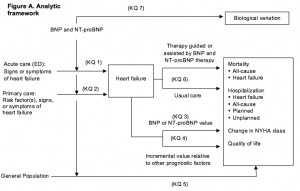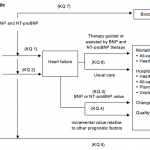The AHRQ review examined socioeconomic outcomes among workers with OA
Socioeconomic Outcomes
The AHRQ review examined socioeconomic outcomes among workers with OA in seven studies. Four studies assessed the change in financial situation after an OA diagnosis and consistently found that workers who had been removed from their job experienced a loss in income. Two studies assessed workers’ compensation claims and acceptances. In one study, a national workers’ compensation board accepted more claims from workers who were removed from the workplace than those who only reduced exposure. A second study concluded that the acceptance rate was similar, regardless of exposure status. Compared to workers who were removed from the workplace, there was a greater increase in medication costs among workers who remained exposed or reduced their exposure.

Canadian Pharmacy
Overall, the economic consequences of the development of OA are impressive. Among the workers included in the studies, those who left the workplace experienced economic repercussions of reduced income and/or unemployment. Even workers who reduced their exposure or stayed employed at the same workplace appeared to lose some income over time; meanwhile, their medication costs increased.
As with typical asthma, the natural history of WEA can be variable. Patients with asthma are more likely to miss work and to report being less effective when at work, even without workplace exacerbations. Studies investigating socioeconomic outcomes in those patients with WEA have generally shown rates of unemployment and income loss comparable to those with new-onset OA. The economic consequences for these groups should be considered strongly in any management plan.
Compensation
Given the substantial adverse economic and employment consequences of WRA, the physician should attempt to obtain as much objective evidence as possible to clarify the diagnosis of WRA, using the approaches discussed above, and in particular while the worker is still employed. Medical and workplace management should be coordinated with the management of compensation.
When “The Worst” Happens
WHEN “THE WORST” HAPPENS
Being let go at work reminded Linda of her need to move forward in her life, to release the past and the good girl image — to stop holding back her emotions and her breath. She used this experience as a wake-up call to:
- Reverse her habit of procrastination
- Accept change more easily
- Seize the present moment for taking action (instead of dwelling in the past)
Linda used the FUN program to Focus, Undo, and Now Act and was able to perceive this event differently. She Focused, without judgment, on her “loss.” She Undid her habitual procrastination and sadness. Then she Now Acted through using the shock to wake herself up and pull herself out of the hole. When she chose to see her so-called misfortune in a different light, it became a turning point. It took on the form of a new street that she was free to walk down, now that she had noticed it was there. Though the experience was stressful, her response was empowering and served to improve her breathing, not worsen it. Indeed, it helped her return to her healing path, freeing not only her breathing but also her beliefs about what was possible.
Even if you’ve been walking down the same street all your life, it’s never too late to wake up and break your habit. FUN enables you to let go of the victim mentality, the one that says “I have no control over this: I am helpless, hopeless, and enslaved.” Instead, you become able to see the connections between disease and stress, emotions and symptoms, responsibility and freedom. By Focusing on whatever is going on in your life, Undoing your errors, and Now Acting on what needs to be changed, you become your own authority. Once we make this shift, the world around us shifts as well.
The experts assume a different place. They are no longer above us while we wait below for them to tell us what’s right or wrong, good or bad, normal or abnormal. We discover that when people, no matter how brilliant, powerful, or well informed, say “Jump!” we don’t need to ask “How high?” We decide for ourselves what’s valuable. And then we are able to choose from a far broader range of options.
If you are willing to see how you get stuck in your own life as the process of falling into the hole, you can make excellent use of it. This image (and the concurrent feelings of being lost, hopeless, and unable to find a way out) is familiar to most of us. One way to handle this would be through imagery. Simply see yourself in the hole, since having an asthma attack can feel like being enclosed in a dark space, being constricted, in pain, a victim. Then use your imagination to get yourself out; and see what happens and how you feel.
Using Opposites
USING OPPOSITES TO UNDO AND HEAL
To make this into an image, you would see yourself feeling blue. Then you imagine the opposite. One client actually saw that she had turned blue. When she imagined the opposite, she spontaneously saw herself turn a glowing pink. She immediately felt happier, healthier, “in the pink.”
Choose three to five thoughts to practice with. They don’t have to be about asthma. They can be anything that the Committee sends your way. If you do this consistently, you soon will be able to identify your recurring thought patterns and Undo them. If you find yourself rebelling against this exercise, not wanting to bother to write things down, and doubting that something so simple can produce results, guess who’s talking! We suggest that you practice this exercise for at least a week and see what happens before you allow the Judge to veto it or the Skeptic to sow the seeds of doubt.
By practicing these acts of self-remembering, you restore yourself to life. Think of them as imaginal habit breakers that for an instant allow you to leave behind your difficulty and take a leap into freedom. Don’t worry about whether your choice of an opposite is far-fetched or impossible. In the world of imagination, anything is possible. And once you get a taste of making the impossible become possible there, you can change your belief and do it here as well. Even when asthma isn’t directly mentioned, its underlying mental, emotional, social, and moral issues are all addressed — grief, anger, perfectionism, power, isolation, self-worth, enslavement, freedom, love, loss, and truth.
IMAGINATION: THE ULTIMATE UNDOER
Imagery is a powerful mind technology for Undoing. The exercises in this chapter are effective for Undoing beliefs, for removing symptoms, and for healing relationships. They help you live an asthma-free life. The next story reveals how closely the heart and the lungs are linked.
Getting to the Heart of Things: A Journey via Imagination
Dr. Martin Rossman had been using imagery successfully with a twenty-four-year-old man with a long history of asthma when suddenly the asthma symptoms returned. Dr. Rossman suggested to his client that he imagine going inside his chest to see what was going on. Once inside, the client reported there was an agitated dwarf guarding the territory leading to his heart. When anyone came too close, the dwarf blocked the entrance, which initially appeared as a tunnel. Not coincidentally, the tunnel looked like a bronchial tube, which closed down when the dwarf sounded the warning of a possible invasion.

